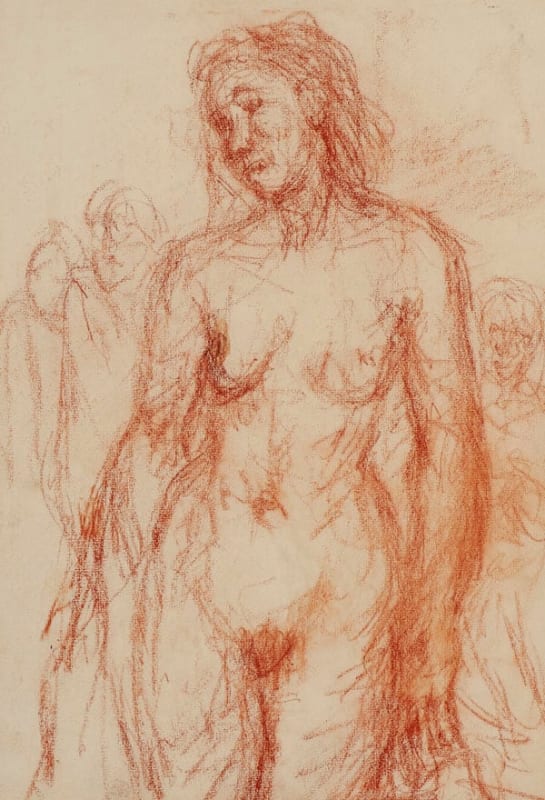Painter and graphic artist Erich Kahn was born into a Jewish family in Stuttgart, Germany on 25 August 1904. He studied art in his native city at the State School for Arts and Crafts (1922–24) and in Paris (1924–26) under Fernand Léger and Amédée Ozenfant, before returning to Stuttgart. In 1936 he participated in the National Exhibition of Jewish Artists in Berlin. Following Hitler's accession to the Chancellorship and the introduction of anti-Semitic legislation, Kahn was imprisoned by the Nazis at Welzheim concentration camp, near Stuttgart in 1938 and fled to England a year later in 1939. His mother and half-sister, who remained, subsequently perished. In England, between July 1940 and May 1941, Kahn was interned as a so-called 'enemy alien' on the Isle of Man at Hutchinson Camp (known as the artists' camp due to the high number of artist internees) with fellow German émigrés Hermann Fechenbach, Paul Hamann, Kurt Schwitters and Hellmuth Weissenborn, among others, as well as the art historian Klaus Hinrichsen, who thought highly of his work (and later wrote 'A Painter's Life and Times' in 1997).
On his release, largely neglected by the English art establishment and psychologically troubled, Kahn continued to work prolifically. His subjects included groups of figures, mythological subjects and (after 1952 when he began psychoanalysis) abstracts, but predominantly nudes, executed in an Expressionist manner. He often drew at ex-Hutchinson internee Paul Hamann's weekly art classes, along with fellow émigrés Hugo Dachinger and Walter Nessler. Although an isolated figure, Kahn participated in the exhibition Contemporary Contintental Art (J. Leger & Son Gallery, 1941) and Artists' Aid Jewry, under the auspices of the Free German league of Culture, at the Whitechapel Art Gallery in 1943. He was supported by the eminent art historian and art critic Professor J P Hodin, who considered him one of the most important exiled German painters in Britain and wrote an article entitled 'Erich Kahn: an Epicurus of Painting' (1989) and the émigré art dealer Siegfried Oppenheimer. Kahn's work was shown commercially at the Redfern Gallery (1956) and at émigrée gallerist Annely Juda’s Molton Gallery (1960). In 1961 he was granted a pension from the German government and in 1978 his work was included in an exhibition of exiled German artists in Britain at the German Embassy London.
Erich Kahn died in London, England on 15 February 1979. The gallerist John Denham held a posthumous solo exhibition of Kahn's work in 1989. In the UK Kahn is represented in the Ben Uri Collection and Tate. The largest collection of his work, including paintings, letters and notebooks, is held by The Berardo Museum in Lisbon, Portugal.


